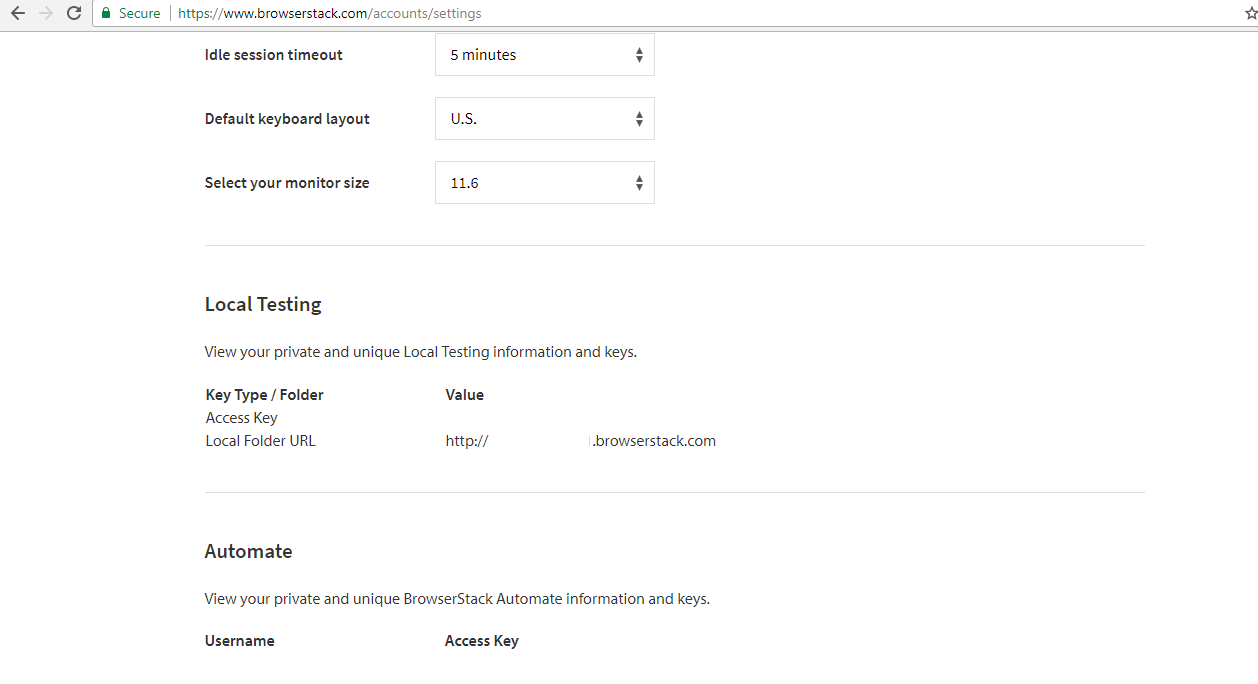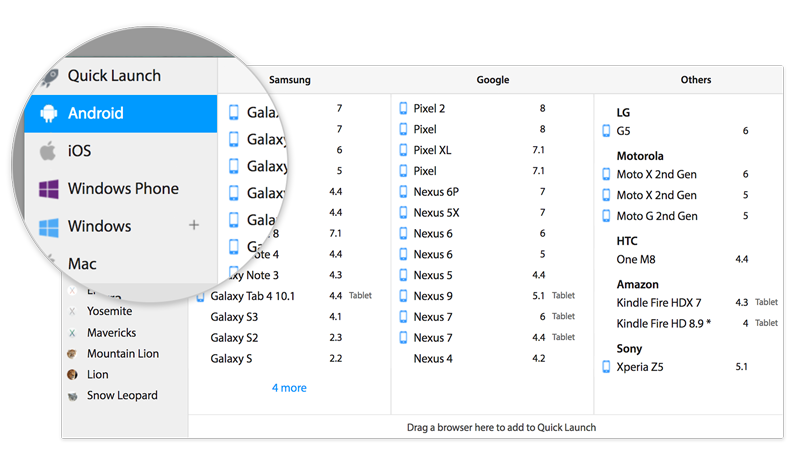

When it comes to cross-browser testing tools, there are many – but BrowserStack is one of the clear leaders. Assistive Tools: Compatibility with accessibility technologies like screen readers for individuals who are low vision or blind.Different devices: The countless smartphones, tablets, desktops, laptops, and even large-format monitors and screens.Browsers and Operating Systems: Think Firefox, Chrome, Safari, Edge, and the dreaded old versions of IE (Internet Explorer) – as well as operating systems like Windows, macOS, iOS, and Android.Modern testing regimens typically include: It’s the only way to ensure that websites and apps work in all viewable formats, and that you’re delivering the best possible user experience. It goes without saying: cross-browser testing is an absolute necessity, not an option. Sure, choice might be good for consumers, but not so good for developers who pull out their hair to make it all possible. Today? There are 9000+ distinct devices shipped with 21 different operating systems, along with 8 major browser engines. There simply weren’t that many phones or browsers to worry about. If you think back even just a decade ago, a web developer could borrow a mobile device from one or two people to test a website’s mobile performance. While responsive design has brought some calm to the storm, the workload for designers and developers has steadily increased – particularly around testing. But despite having an abundance of ambition, it’s still a lot more complicated today to build uniform experiences across so many devices and browsers. OK, so maybe creativity isn’t going the way of the dinosaurs.

They work with available media, turn limitations into the limitless, and bend rigid rules towards beauty. They’re ambitious explorers who crave the structure of a tightly bound canvas to paint on. In that same sense – minus the genetic cloning – web designers find a way. When he uncovers the nest, he says: “ life finds a way.” You might recall the line in Jurassic Park, the one where Jeff Goldblum finds the eggs that shouldn’t exist (remember that all dinosaurs on the island were bred as female). It’s not a leap to suggest that frameworks like Bootstrap have essentially “handcuffed” web design with very explicit standards – all in an effort to maintain order.īut did it kill creativity? That’s debatable. So… haters gonna hate.īack to responsiveness. Now, before you get defensive, remember that a vocal minority out there still maintains that the real death of the modern web can be traced back to CSS. There are some that say responsive design killed creativity. It provided an architectural system to help ameliorate the burden of managing both desktop and mobile websites (remember the “.mobi” extension?) across multiple form factors. Created by Ethan Marcotte in 2010, responsiveness brought order to the chaos. With so many screens to serve, it’s no wonder that responsive design was born. And while the iPad ushered in the tablet craze, everyone from Amazon to Google to Samsung was introducing a different screen size for delivering content. The birth of mobile responsive web designĪpple might have started the small screen revolution, but the market quickly followed suit. There's a lot to cover, but before we dive into the details and share our two cents, let's make like the Wayback Machine and take a look at how we got here. It's a fantastic tool with an expansive set of testing capabilities.

Today, we'll be reviewing BrowserStack – and how it brings control to (at least some) of that chaos. Then came the iPhone… and smartphones… and tablets… and chaos. (If you have any personal favorites, you can always take a walk down memory lane using the Wayback Machine.

#FREE BROWSER STACK MOVIE#
Nothing fit into a “box” or obeyed a specific navigation style, like the movie site for Donnie Darko or MTV.com. We were browsing the unknown, stumbling upon websites with real personality and design flair. There was something exciting about that period. Those were simpler times, when things seemed a little less unruly – well, maybe with the exception of Adobe Flash – and desktops and laptops were the only stages to play on. If you’re a designer at heart, you might get nostalgic for the “old days.” It was that period in the early 2000s when web design was unique, eccentric, sometimes weird, and often outlandishly creative.


 0 kommentar(er)
0 kommentar(er)
